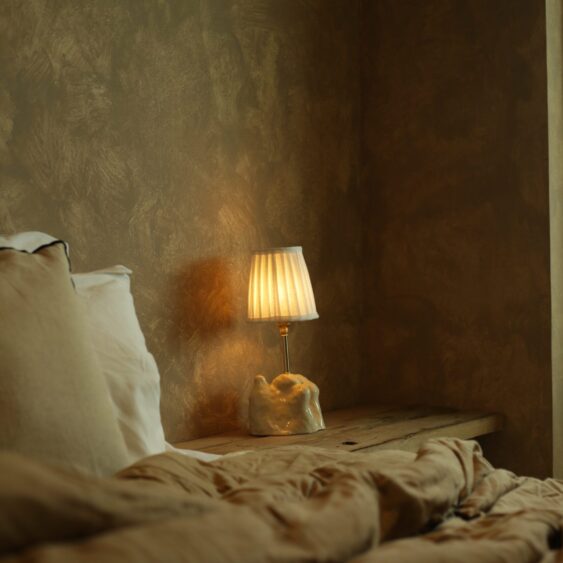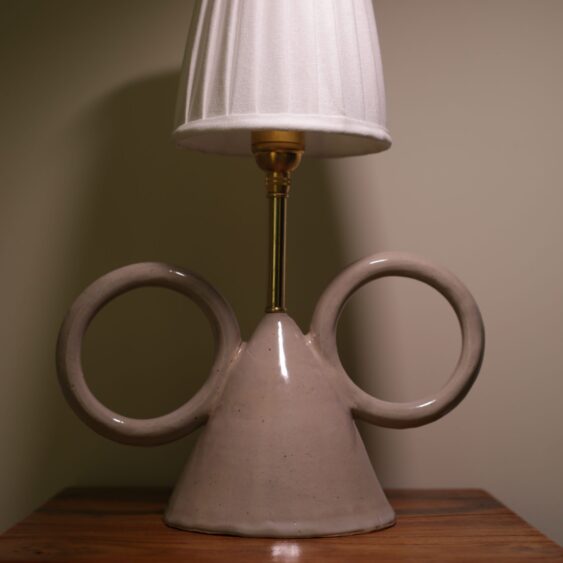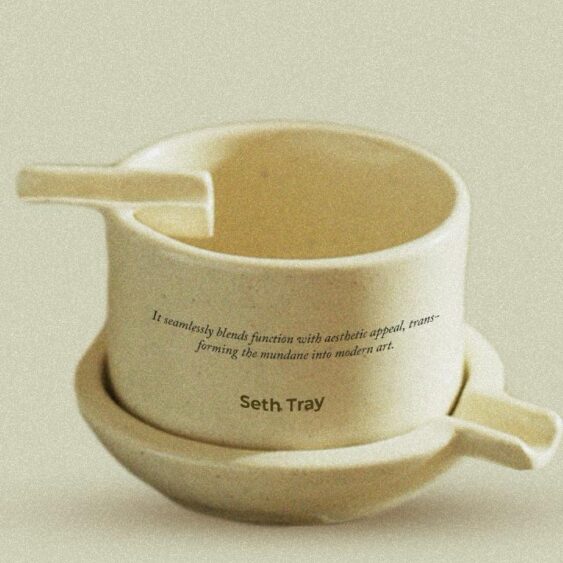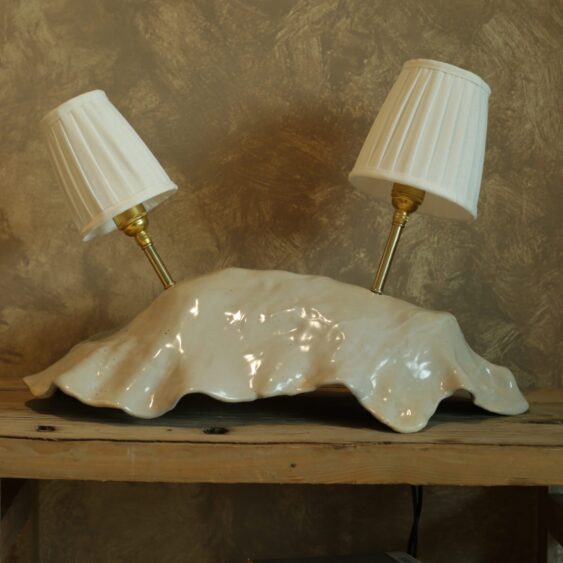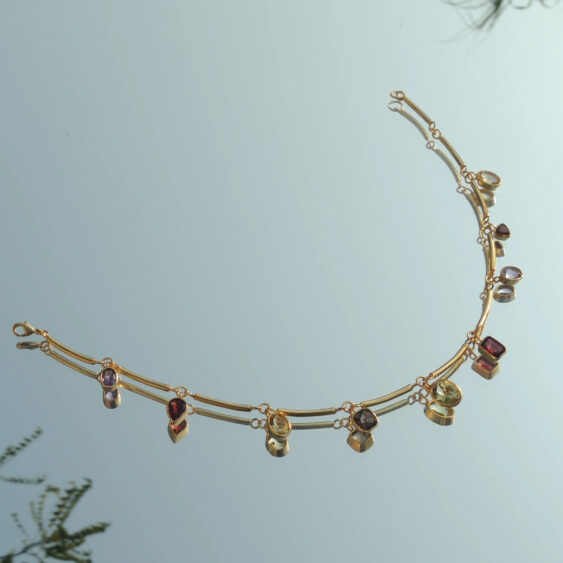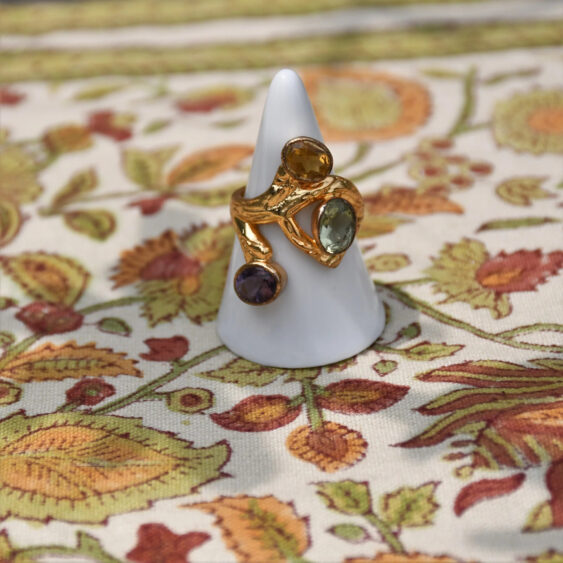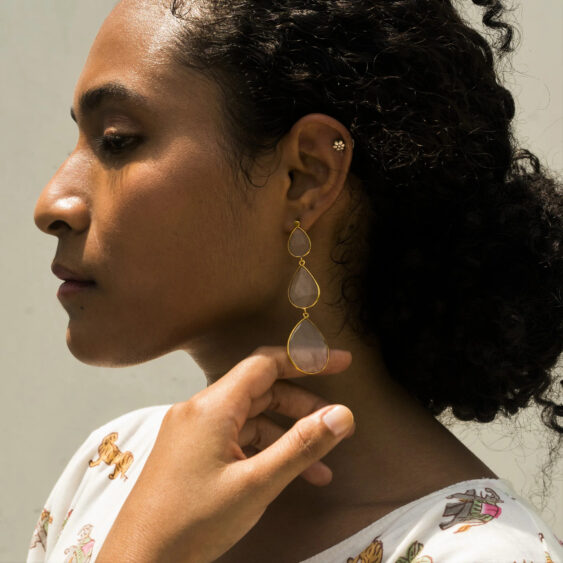
The prelude of A Bitter Feeling’s ceramic range is eccentric and distinctive, taking a fresh approach to an art form traditionally focused on functionality. Through a range of peculiar ashtrays inspired by boomerangs, candles inspired by thorn bugs, and custom lampshades inspired by a volcano, each piece commands attention and sparks conversation, inviting you to pause and admire the potential of working with clay. Taking a respite from conventional ceramic forms, founder Sanna Qazi speaks to Blur The Border about how a childhood connection to art inspired her brand to focus on handmade ceramics, the importance of infusing an artistic spirit into clay, navigating key aspects of running a business, and her passion for sharing the art of pottery with those around her.
Sanna's Picks
Is there a podcast/book/social media handle that you’ve found helpful for your business?
Love Foundation








Your last purchase from a Homegrown brand was...
I recently got my studio scented by this homegrown scenting brand called Stimuli







BTB: A Bitter Feeling is a unique name, how did that translate into a name for a ceramic brand?
SANNA: It’s very nostalgic. We don't usually associate the phrase ‘ a bitter feeling’ with a positive feeling or something good in our lives, but they are very important to get to a positive space. I think personally art has been an emotional outlet and something I have indulged in since even before I can remember. So, when I got into ceramic I really wanted to give it a name with an emotion that art brought in me— A Bitter Feeling.
BTB: How did you get introduced to handmade ceramics and what inspired you to evolve this into a full-fledged business?
SANNA: I have no experience or qualifications in the field but ceramics have always fascinated me. You will always find ceramic pieces in museums, where art is preserved, so, I eventually realised that they are also timeless. I have been learning and making ceramics for over three to four years now and I have also tried taking short retreats where I have had great teachers. So, as an artist, the freedom of creative expression that I get from clay as a medium is very invaluable to me and I really wanted to share this with the world.
BTB: And what is your design process like?
SANNA: The My creative process often starts in my head, where inspiration can come from anything—nature, architecture, stories, or even simple shapes. I might get an idea from a movie, combine it with a thought from a recent conversation, and start shaping it mentally. When I’m unsure about executing a design exactly as I envision it, I sketch it multiple times, exploring different angles and perspectives before bringing it to life in clay.
BTB: Could you please tell us a little more about your sourcing process and any struggles you've faced?
SANNA: Materials like clay and essential tools are relatively easy to find—I've had no issues sourcing clay—but other materials, such as specific glazes or ingredients needed for certain shades, can be difficult to obtain. The community of ceramists in India, although rich in history, is quite small, especially among those who actively connect with one another. In contrast to communities abroad, where ceramicists have access to platforms that facilitate sharing resources—like firing kilns or materials—this is not as developed in India. In other countries, I can easily reach out to a ceramist in my area to borrow a kiln for firing, but here, that network is not as robust. This lack of connection makes it challenging to collaborate and share resources effectively.
What is the show, book or song you are currently obsessing over?
The Bear







In your spare time, we will find you..
Brainstorming for new ideas


Name other homegrown small brands you are loving right now.
Qua Clothing and Stimuli







Your personal favorite from A Bitter Feeling?
The first lamp I made, Casper







BTB: What strategies do you use to manage production timelines and maintain consistency in complex, bespoke ceramics?
SANNA: Overall, categorizing my ceramics has significantly improved my ability to manage production timelines and maintain consistency. I have two main categories of ceramics. One is Tender Objects which includes small ceramic pieces such as ashtrays, candles, and other tableware. For these, I can produce larger batches at once, say, I can bake between 50 to 100 pieces in one go. So, from a production perspective, this is quite ideal, I can list these items on my website for instant ordering. Collectibles, on the other hand, consist of larger pieces like lamps and, in the future, sculptures. For these, I typically make only 2 to 3 pieces at a time. The production process for these lamps is different; they cannot be ordered instantly through the website. Instead, customers must request a quote. I communicate with them about the fact that each lamp is an art piece crafted from scratch, which means there will be a specific timeline for delivery. I inform them that the finished product would not be identical to the prototype because the designs are handmade. This often reassures customers, and they appreciate waiting for a unique piece that is made just for them.
BTB: How do you navigate the balance between artistic creativity and the practical aspects of running a business?
SANNA: Managing the business really affected my creativity in the beginning. I struggled to separate my time between artistic work and running a business. I felt like I was losing my creative edge.
But, I quickly realized the importance of structuring my schedule. Now, I dedicate 3 to 4 days a week solely to studio work, where I focus on creating new pieces, firing, and glazing. On the remaining days, I oversee studio operations without touching clay.
During these management days, I also handle other tasks, such as preparing content for social media, coordinating with my graphic designer, and dispatching orders.
BTB: Are creative blocks a frequent phenomenon for you as an artist? What do you do during these times?
SANNA: There Absolutely, I experience that a lot! I think every artist goes through creative blocks, and it's not just a once-in-a-lifetime occurrence. It can happen twice a year, once a month—anytime, really. I usually try to shut everything out and limit my social interactions. I might travel or engage in activities that make me happy to get my creative juices flowing again. During one of these times, I found a ceramic artist while I was traveling and later got in touch with them through Instagram. They offered me a three-day basic course on ceramics, which was incredibly beneficial. It felt great to revisit the fundamentals, and I returned feeling refreshed with so many ideas that I now want to implement in my designs. I believe that taking time for myself and focusing inward helps me overcome my creative blocks.
BTB: ...And are there times when you just sit with clay and let it take you wherever it leads?
SANNA: Yeah, a lot of the lamps and in fact a lot of ashtrays are some of the designs that just came out organically. I recently launched this ashtray called Boomerang and I was just playing with clay. I had no intention of making anything and it turned out quite nice after I fired it. So there are times when I'm just playing with clay and it turns out into something nice.
BTB: How important has social media, brand building, and imagery been for growing your customer base?
SANNA: Social media has played a significant role in growing my customer base. All my orders in Delhi—since I’m based in the city—comes from people who have seen the products in someone’s house or come across the promotion. But most of my orders from outside are because of social media. I try to promote more on social media, and I feel that has really helped me connect with consumers in other cities.
When it comes to the visual aesthetics of my social media, I believe it is very important that it aligns with the visual appeal of my ceramic products. How your social media looks matters to everyone else, too. For example, if I create a lamp with a specific inspiration, I will discuss it with my graphic designer. After our conversation, she usually sends me a draft of how the media post will look. This collaboration helps me express what the piece means to me, and I am glad I can explain my inspiration through social media. Most people trust how it’s presented on social media, along with the details provided, and they just go for it. I think digital platforms have made people believe in digital representations more than physical touch.
BTB: How does your homestay Chapter 39 tie in with A Bitter Feeling?
SANNA: I previously had my studio in a different location, but I realized that to nurture my creativity, I needed a specific vibe in my working environment. If I were working on my laptop or something else, I could be anywhere, but for creating with clay, I really wanted a space with a pleasant atmosphere. I needed to be able to look out the window and see some greenery while I worked.
I decided to turn my family home in Delhi into a homestay. I have always loved the energy of that house, so I moved my studio to the backyard. Now, when I have guests who are interested in pottery, I offer them classes. I never thought I would host workshops or teach classes because I still consider myself a learner and feel there’s so much more I need to know before I can truly call myself an instructor. But, I do this for fun, and since the participants are also learning the basics, it’s been a rewarding experience.
BTB: What do you think the industry is lacking in terms of supporting, you know, businesses like yours?
SANNA: Honestly, platforms like Blur The Border and others that focus on smaller brands and businesses have been incredibly helpful. Small businesses deserve more attention, especially since many are creating high-quality, innovative designs. Unfortunately, they often don’t reach the right audience or have access to suitable platforms.
The industry really lacks this kind of visibility, and what you’re doing is essential. There should be more platforms like yours willing to highlight smaller businesses. For instance, if small businesses participate in exhibitions, it's typically limited to a specific region. But gaining attention from a digital platform allows for a global reach. Someone sitting in Bombay could discover my work, which is invaluable. The industry definitely needs more platforms like yours.
FOLLOW A BITTER FEELING'S INSTAGRAM @abitterfeeling

